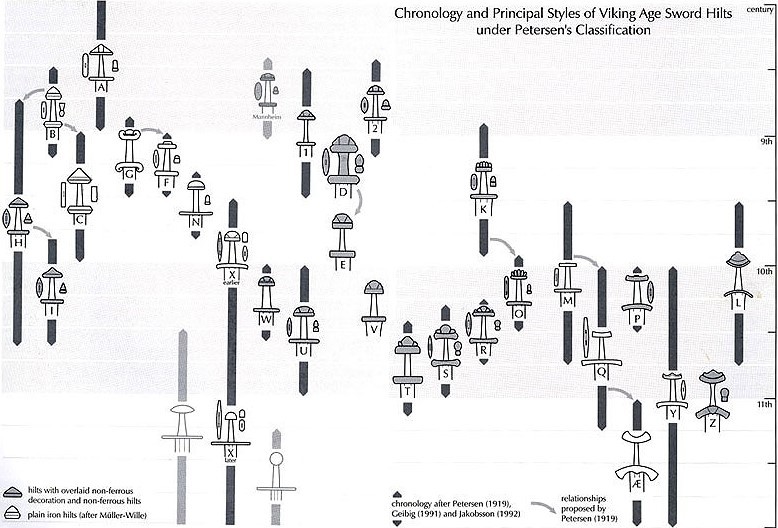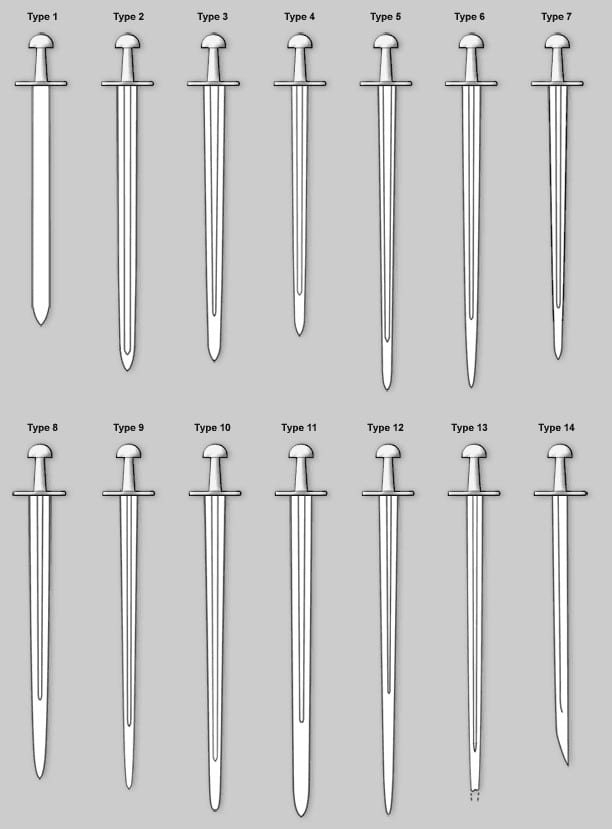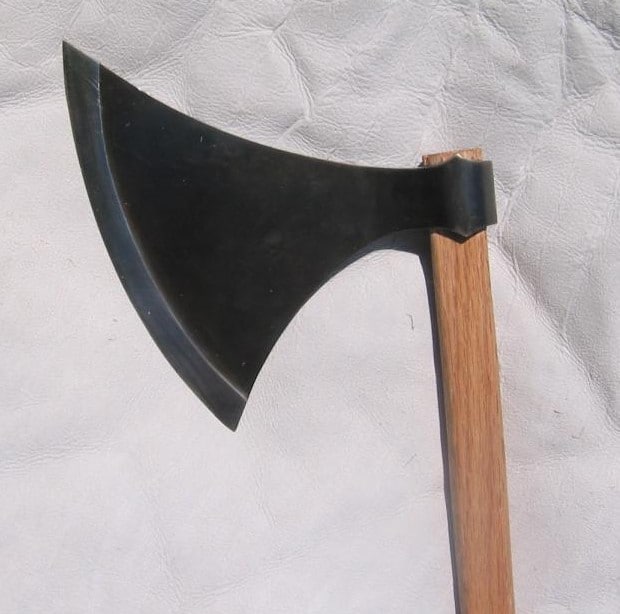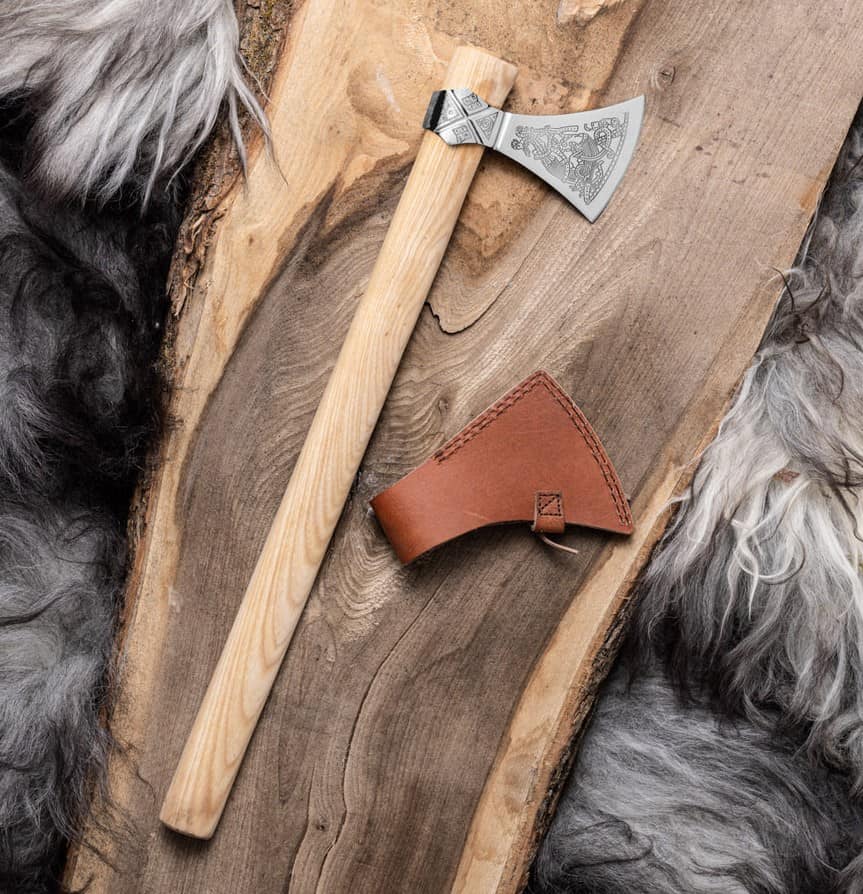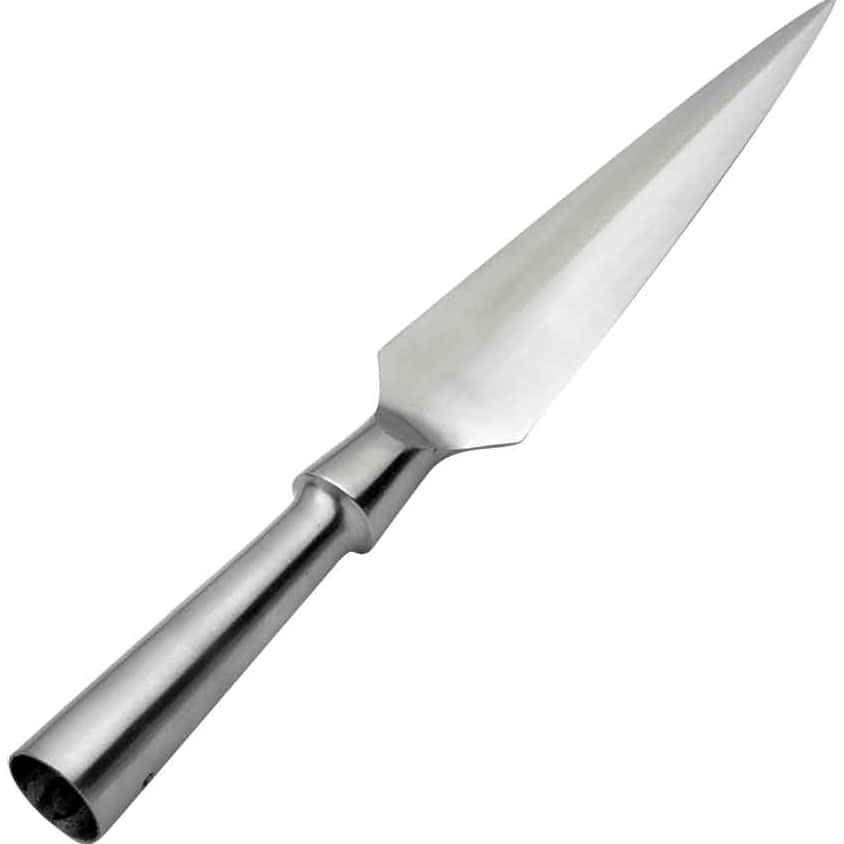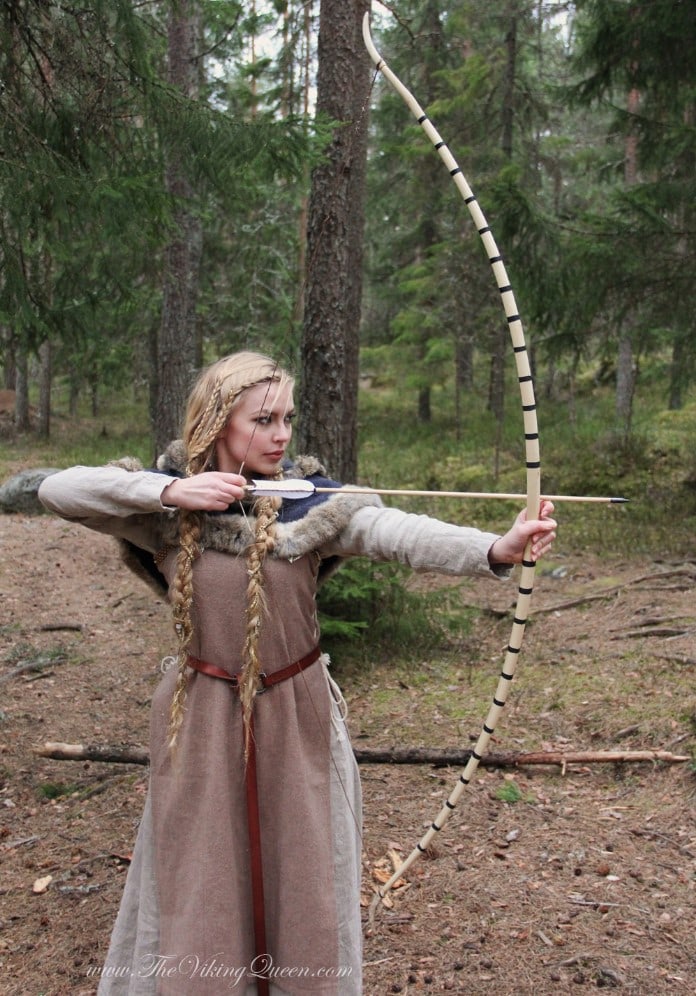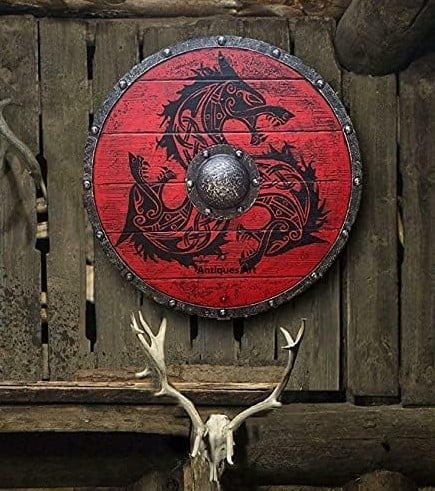The Viking Arsenal: What Did Vikings Carry to Battle?
The Viking warriors, renowned for their fierce raids and legendary conquests, were not only celebrated for their valor and tenacity but also for their remarkable weaponry. The Viking arsenal was a testament to their martial prowess, offering a glimpse into the strategic minds of these seafaring people.
In this exploration, we venture into the heart of the Viking Age to uncover the tools and instruments that adorned a Viking’s armory. From the imposing swords that struck fear into the hearts of their foes to the versatile shields that protected them in the heat of battle, the Viking warriors carried a diverse array of weapons, each with its own purpose and significance.

Main Hand
Swords
Petersen Typology: Jan Petersen’s 1919 typology of Viking swords is still widely used across Europe to classify and date these weapons. It is based on the morphology of the sword hilt, and Petersen identified a total of 26 types. The typology has been highly influential in the study of Viking swords, helping to identify chronological trends and regional variations in sword design.
Geibig Typology: Herbert Geibig’s 1991 typology of Viking swords is a more refined typology than Petersen’s, taking into account a wider range of features, such as blade morphology and pommel shape. However, it is also more complex, and it is not as widely used by scholars.
Ulfberht Sword

Suontaka Sword

Einar Sword

Sticklestad Sword

Axes
Bearded Axes
Bearded axes are a type of Viking axe that is distinguished by its distinctive blade shape, which flares out at the bottom, resembling a beard. Bearded axes were used for both battle and everyday tasks, such as chopping wood and building houses. In battle, bearded axes were used to deliver powerful blows that could cleave through shields and armor.
The flared blade shape also made bearded axes effective for hooking and trapping opponents. For everyday tasks, bearded axes were used to chop wood, split logs, and build houses. The flared blade shape was also useful for clearing brush and vegetation.
Danish Axes
Danish axes, also known as Dane axes, were the most popular type of Viking axe. They were long-handled and had a large, heavy blade that was designed for both chopping and thrusting. Danish axes were used in battle to break through shields and armor, and they were also effective for cutting down trees and logs.
Mammen Axes
Mammen axes are a type of Viking axe that is named after a Viking burial site in Denmark where they were found. Mammen axes have a distinctive shape with a curved blade and a long, narrow neck. They were used for both battle and everyday tasks. In battle, Mammen axes were used to deliver powerful blows that could cleave through shields and armor.
The curved blade shape also made Mammen axes effective for hooking and trapping opponents. For everyday tasks, Mammen axes were used to chop wood, split logs, and build houses. The curved blade shape was also useful for clearing brush and vegetation.
Throwing Axes
Throwing axes were smaller and lighter than other Viking axes and were designed for throwing. Throwing axes were used in battle and for hunting. In battle, throwing axes were used to harass and disorient opponents. They were also used to finish off wounded or disabled enemies.
For hunting, throwing axes were used to bring down small animals, such as rabbits and squirrels. They were also used to stun larger animals, such as deer and elk, so that they could be finished off with a spear or arrow.
Spears
Heavy Throwing Spears
Heavy throwing spears were the most common type of spear used by Vikings. They were designed to be thrown at enemies from a distance and had heavier spearheads than thrusting spears.
Heavy throwing spearheads were typically made of iron and could be up to half a meter long. They were often decorated with designs in copper or silver. The shafts of heavy throwing spears were typically made of ash and could be up to two meters long.
Lighter Thrusting Spears
Lighter thrusting spears were less common than heavy throwing spears, but they were still used by Vikings. Thrusting spears were designed to be used in hand-to-hand combat and had lighter spearheads than throwing spears.
Thrusting spearheads were also typically made of iron and could be up to half a meter long. They were often decorated with designs in copper or silver. The shafts of thrusting spears were typically made of ash and could be up to two meters long.
Winged Spears
Winged spears, also known as krokspjot, were a type of spear that had wings on the sides of the spearhead. These wings helped to stabilize the spear in flight and made it more accurate. Winged spears were used for both battle and everyday tasks, such as hunting.
Winged spearheads were typically made of iron and could be up to half a meter long. The shafts of winged spears were typically made of ash and could be up to two meters long.
Bows
The Vikings used a type of bow known as the longbow. It was a tall, narrow bow made of yew wood, with a D-shaped cross-section. Longbows were typically around 6 feet long (1.8 meters) and could have a draw weight of over 100 pounds (45 kilograms). This made them very powerful weapons, capable of firing arrows up to 200 meters (660 feet).
Longbows were used by the Vikings for both hunting and warfare. They were particularly effective against unarmored opponents, as their arrows could penetrate leather and chain mail armor. Longbows were also used to fire flaming arrows, which could be used to set fire to ships and buildings.
There is some evidence to suggest that the Vikings may have also used composite recurve bows, but this is less certain. Composite recurve bows are made from multiple materials, such as wood, sinew, and horn, and are more powerful and efficient than longbows. However, they are also more complex and expensive to make.
Here is a summary of the key features of the Viking longbow:
- Material: Yew wood
- Length: Around 6 feet (1.8 meters)
- Draw weight: Over 100 pounds (45 kilograms)
- Range: Up to 200 meters (660 feet)
- Uses: Hunting and warfare
The Viking longbow was a formidable weapon, and it played an important role in Viking society. It was a symbol of power and skill, and it was used to great effect by Viking warriors in both hunting and warfare.
Offhand
Knives and Daggers
Seax
The seax was a single-edged knife that was used by the Vikings for both everyday tasks and as a weapon. It was a common weapon among the Vikings, and it was used for close combat. The blade of the seax was typically between 7 and 75 cm long, and it had a straight or slightly curved edge.
The handle was made of wood, bone, or antler, and it was often decorated with metal fittings. The seax was a versatile weapon that could be used for a variety of purposes. It could be used to butcher animals, to prepare food, to build shelters, and to fight in battle. The seax was also a symbol of status and wealth among the Vikings.
Shields
Round Shields
The most common type of Viking shield was the round shield. It was circular in shape and was made of wood. The shield was held from the center by gripping a bar running across a hole cut in the wood, and the wearer’s hand was protected by a metal dome, known as the “boss,” fastened to the outside of the shield.
The round shield was highly maneuverable and was painted to protect the wood planks. Round Viking shields were typically between 75 and 90 cm in diameter and were made of a variety of woods, including pine, spruce, and oak. The shields were often covered in leather or hide to protect them from the elements and to make them more durable.
Kite Shields
Kite shields were an innovation of the Normans, who were direct descendants of Vikings who invaded western France and were eventually given their own territory. They were lightweight but provided greater protection for the lower body.
Kite shields were also circular in shape but had a pointed bottom that extended down to protect the legs. Kite shields were typically made of wood and were covered in leather or hide. They were often decorated with colorful designs and symbols.
Conclusion
The Vikings, with their storied history and indomitable spirit, have left a mark on warfare. As we peer into the Viking arsenal, we gain a deeper appreciation for the ingenuity and adaptability of these warriors. Their mastery of diverse weaponry, from the devastating swords to the multifunctional shields, reveals a keen understanding of the strategic intricacies of combat.
The legacy of the Viking weapons endures, demonstrating their indomitable spirit and unwavering commitment to their way of life. In a world that has evolved immeasurably since their time, the Viking arsenal stands as a tribute to the enduring fascination with these legendary seafarers and the remarkable tools they wielded in their quest for glory.

